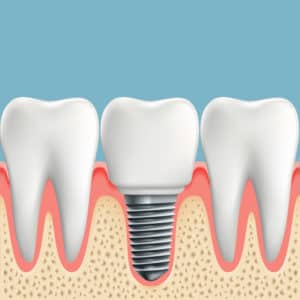 Dental crowns are among the oldest forms of restorative dentistry, and today, they continue to be one of the most popular restorative and cosmetic solutions. While many people are familiar with how a crown works (it’s placed over a tooth to shield and protect it), not everyone realizes that crowns can do more now than they’ve ever been able to. For instance, when coupled with a dental implant, a dental crown can even replace a lost tooth, providing an alternative to traditional dental bridges.
Dental crowns are among the oldest forms of restorative dentistry, and today, they continue to be one of the most popular restorative and cosmetic solutions. While many people are familiar with how a crown works (it’s placed over a tooth to shield and protect it), not everyone realizes that crowns can do more now than they’ve ever been able to. For instance, when coupled with a dental implant, a dental crown can even replace a lost tooth, providing an alternative to traditional dental bridges.
An Alternative to a Dental Bridge
A dental bridge is the traditional go-to option for replacing a lost tooth, or even two or three teeth if they’re adjacent to each other. Dental bridges are sturdy and custom-made for optimal comfort, but to place the prosthetic, your dentist will have to slightly modify the remaining teeth next to the empty space in your smile. These teeth, known as abutment teeth, serve as anchors to support the crowns on each side of the bridge. By contrast, a dental crown can be fashioned to mimic the lost tooth, then placed on top of a dental implant, which is inserted into the jawbone to replace the lost tooth root.
The Benefits of an Implant-Supported Crown
A dental implant and crown closely resemble the natural structure of a tooth, from its root within your jawbone to the crown that extends above the gum line. One of the immediate benefits is that you can avoid having to modify healthy tooth structure to support your replacement tooth. Also, the dental implant is stimulated every time you bite and chew, which helps preserve the strength and integrity of your jawbone to reduce your risks of further tooth loss or dental complications in the future.

